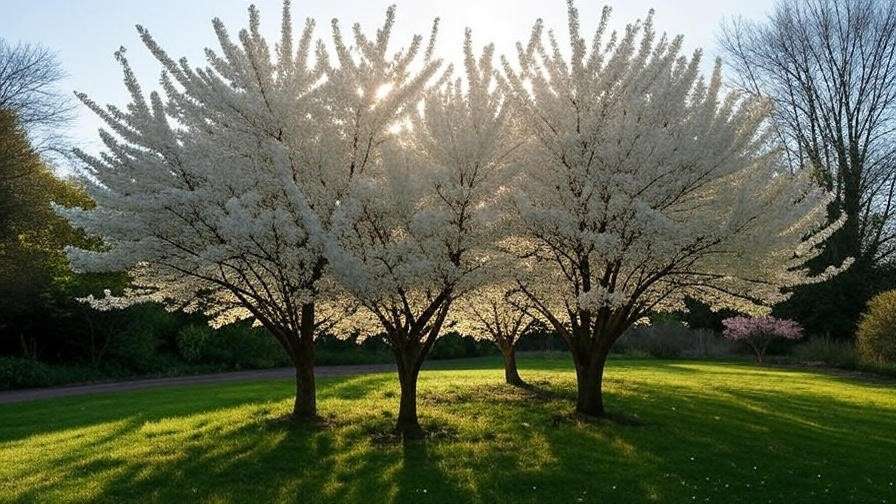Imagine stepping into your garden and being greeted by a cascade of delicate white flowering trees, their blooms glowing under the sunlight, creating a serene and elegant oasis. Whether you’re a seasoned gardener or a beginner, white flowering trees add timeless beauty, attract pollinators, and elevate any outdoor space. In this comprehensive guide, we’ll explore 10 stunning white flowering trees, share expert care tips, and provide landscaping ideas to help you create a vibrant, blooming paradise. As horticulturists with years of experience in tree care, we’ve crafted this article to answer your questions and solve the challenge of choosing and maintaining the perfect tree for your garden. 🌿
Why Choose White Flowering Trees? 🌼
White flowering trees are more than just a visual delight—they’re a versatile and impactful addition to any landscape. Their pristine blooms complement every garden style, support local ecosystems, and carry deep cultural significance.
Aesthetic Appeal and Versatility
White blossoms bring elegance and sophistication to gardens, whether you’re designing a modern minimalist space or a cozy cottage garden. Their neutral hue pairs beautifully with vibrant perennials, lush greenery, or even other flowering trees. For example, a white flowering dogwood can serve as a stunning focal point in a mixed border, while a star magnolia adds charm to compact urban spaces. Their versatility makes them a favorite among landscape designers aiming for year-round beauty. 🌸
Ecological Benefits
Beyond aesthetics, white flowering trees play a vital role in supporting pollinators like bees, butterflies, and hummingbirds 🦋. Species like the serviceberry or hawthorn provide nectar and habitat, boosting biodiversity. By planting these trees, you contribute to a healthier ecosystem, ensuring your garden thrives as part of the natural world.
Emotional and Cultural Significance
White flowers often symbolize purity, peace, and new beginnings, making these trees ideal for special occasions like weddings or memorials. In many cultures, white flowering trees like magnolias are planted to honor loved ones or mark significant milestones. Their emotional resonance adds a layer of meaning to your garden’s design.
Top 10 White Flowering Trees for Your Garden 🌲
Here’s our expertly curated list of 10 white flowering trees that will transform your garden. Each tree includes a description, ideal growing conditions, and care tips to ensure vibrant blooms.
1. Flowering Dogwood (Cornus florida)
The flowering dogwood is a classic choice, known for its elegant white bracts that resemble petals, blooming in early spring. Its vibrant fall foliage in shades of red and purple adds year-round interest.
- USDA Zones: 5-9
- Conditions: Prefers partial shade and well-drained, slightly acidic soil.
- Care Tip: Mulch around the base to retain moisture and avoid waterlogging. Prune sparingly in late winter to maintain shape.
- Landscaping Use: Perfect as a specimen tree or in mixed borders for a pop of spring color. 🌸
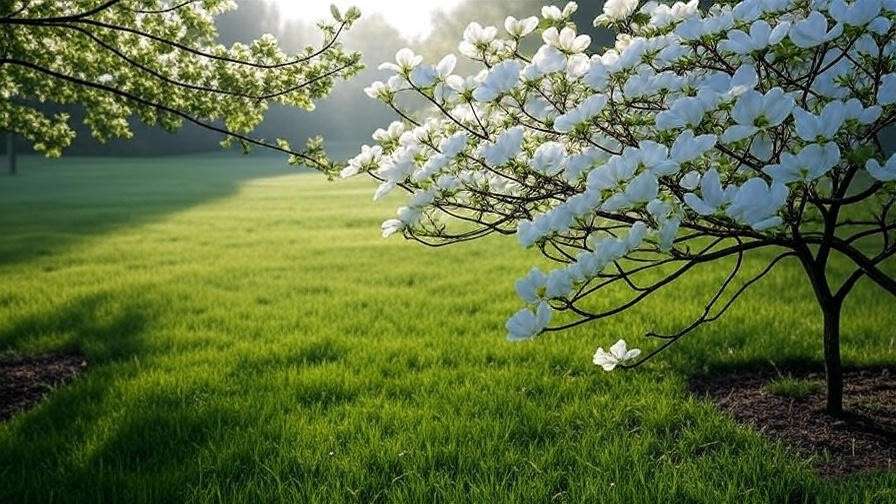
2. Star Magnolia (Magnolia stellata)
With its star-shaped white blooms, the star magnolia is a compact tree ideal for small gardens or patios. Its early spring flowers emit a subtle fragrance, making it a sensory delight.
- USDA Zones: 4-8
- Conditions: Thrives in well-drained, loamy soil with full sun to partial shade.
- Care Tip: Protect from late frosts, as buds can be sensitive. Water consistently during the first year.
- Landscaping Use: Plant near walkways or patios for close-up enjoyment of its delicate blooms. 🌟
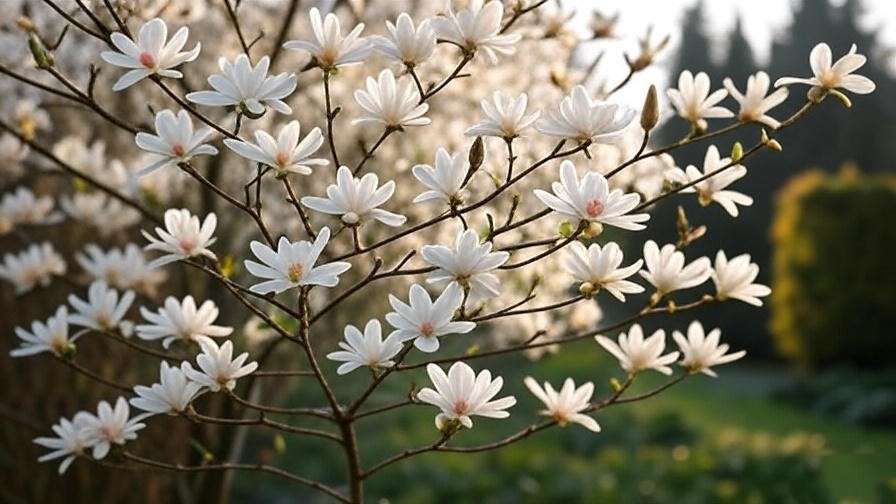
3. Crabapple (Malus spp.)
Crabapples offer clusters of fragrant white flowers in spring, followed by colorful fruit in fall 🍎. Their versatility makes them a favorite for ornamental gardens.
- USDA Zones: 4-8
- Conditions: Prefers full sun and moderately fertile soil.
- Care Tip: Prune in late winter to remove dead branches and maintain an open canopy for air circulation.
- Landscaping Use: Use as a standalone tree or in rows for a dramatic spring display.
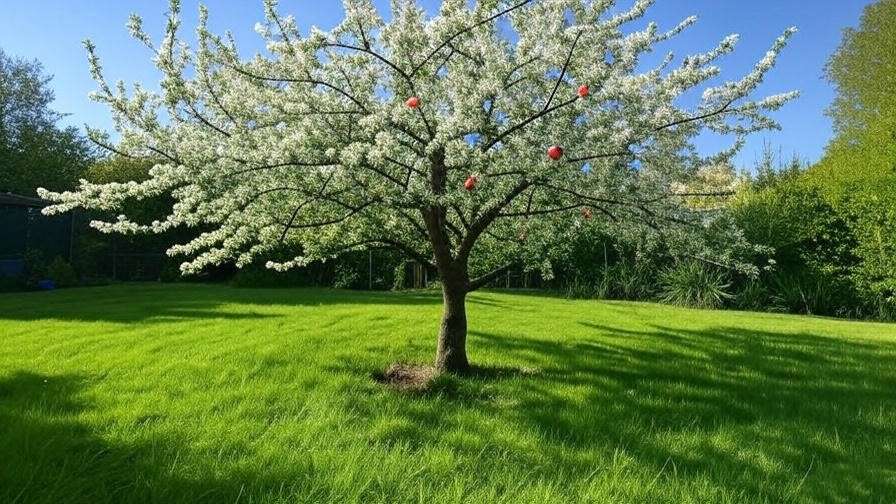
4. White Fringe Tree (Chionanthus virginicus)
The white fringe tree, native to North America, boasts delicate, fringe-like flowers that create a cloud-like effect in late spring.
- USDA Zones: 3-9
- Conditions: Adapts to various soils but prefers moist, well-drained conditions.
- Care Tip: Minimal pruning is needed; focus on removing deadwood to enhance its natural form.
- Landscaping Use: Ideal for woodland gardens or as an accent near water features. 🌊
5. Hawthorn (Crataegus spp.)
Hawthorns produce clusters of white blooms in spring, followed by red berries that attract birds 🐦. Their thorny branches add a layer of privacy.
- USDA Zones: 4-7
- Conditions: Drought-tolerant once established; prefers full sun.
- Care Tip: Monitor for pests like aphids and treat with insecticidal soap if needed.
- Landscaping Use: Great for hedges or as a natural barrier in larger landscapes.
6. Japanese Snowbell (Styrax japonicus)
The Japanese snowbell features bell-shaped white flowers that dangle gracefully from its branches, blooming in late spring.
- USDA Zones: 5-8
- Conditions: Prefers acidic, well-drained soil and partial shade.
- Care Tip: Water regularly during dry spells to prevent stress.
- Landscaping Use: Perfect for small gardens or as an understory tree in shaded areas. 🌿
7. Serviceberry (Amelanchier spp.)
Serviceberries bloom with delicate white flowers in early spring, followed by edible berries that attract wildlife 🫐.
- USDA Zones: 4-9
- Conditions: Tolerates partial shade and various soil types.
- Care Tip: Apply a balanced fertilizer in spring to boost growth.
- Landscaping Use: Use in mixed shrub borders or as a multi-stemmed focal point.
8. White Redbud (Cercis canadensis ‘Alba’)
The white redbud offers heart-shaped leaves and clusters of white blossoms in early spring, creating a soft, romantic look.
- USDA Zones: 4-9
- Conditions: Thrives in full sun to partial shade; prefers well-drained soil.
- Care Tip: Avoid overwatering to prevent root rot.
- Landscaping Use: Ideal for small gardens or near patios for springtime charm. 🌸
9. Catalpa (Catalpa spp.)
Catalpa trees produce large, showy clusters of white flowers in early summer, complemented by bold, heart-shaped leaves.
- USDA Zones: 5-9
- Conditions: Prefers moist, fertile soil and full sun.
- Care Tip: Prune suckers at the base to maintain a tidy appearance.
- Landscaping Use: Use as a shade tree or dramatic focal point in large yards.
10. Crepe Myrtle (Lagerstroemia indica)
Crepe myrtles offer long-lasting white blooms throughout summer, adding vibrancy to warm climates.
- USDA Zones: 6-9
- Conditions: Loves full sun and well-drained soil.
- Care Tip: Deadhead spent blooms to encourage reblooming.
- Landscaping Use: Perfect for borders, hedges, or as a standalone specimen in sunny gardens. ☀️
How to Choose the Right White Flowering Tree for Your Garden 🧑🌾
Selecting the perfect white flowering tree requires careful consideration of your garden’s conditions, space, and aesthetic goals.
Assessing Your Garden’s Conditions
Start by evaluating your climate, soil type, and sunlight exposure. Check your USDA hardiness zone to ensure the tree thrives in your region. For example, a star magnolia suits cooler climates (zones 4-8), while crepe myrtles excel in warmer zones (6-9). Test your soil’s pH and drainage to match the tree’s needs—dogwoods prefer slightly acidic soil, while hawthorns are more adaptable.
Considering Size and Space
Consider your garden’s size when choosing a tree. Compact options like star magnolias or Japanese snowbells are ideal for small yards or urban spaces, while catalpas or crabapples suit larger landscapes. Measure available space to ensure the tree’s mature size won’t overwhelm your garden.
Balancing Aesthetics and Maintenance
If you’re a busy gardener, opt for low-maintenance trees like serviceberries or fringe trees, which require minimal pruning and care. For maximum visual impact, choose trees like dogwoods or catalpas, which offer bold blooms and striking foliage but may need more attention.
Expert Care Tips for White Flowering Trees 🌱
Once you’ve chosen your white flowering tree, proper care is essential to ensure vibrant blooms and healthy growth. These expert tips, drawn from years of horticultural experience, will guide you through planting, maintenance, and protection.
Planting Guidelines
The best time to plant white flowering trees is in early spring or fall when temperatures are mild, allowing roots to establish before extreme weather. Follow these steps for success:
- Choose the Right Spot: Ensure the location matches the tree’s sunlight and soil preferences.
- Prepare the Soil: Dig a hole twice as wide and as deep as the root ball. Amend with compost for nutrient-rich, well-drained soil.
- Plant Properly: Place the tree so the root collar is level with the soil surface. Backfill and water thoroughly.
- Mulch: Apply a 2-3 inch layer of organic mulch (like bark or wood chips) around the base to retain moisture and regulate soil temperature. 🌿
Example: When planting a flowering dogwood, ensure partial shade and slightly acidic soil for optimal growth.
Watering and Fertilizing
Young white flowering trees need consistent watering to establish strong roots. Water deeply once or twice a week, depending on rainfall, ensuring the soil stays moist but not waterlogged. Established trees are more drought-tolerant but benefit from occasional deep watering during dry spells.
- Fertilizing: Apply a balanced, slow-release fertilizer (e.g., 10-10-10) in early spring to promote healthy growth and blooms. Avoid over-fertilizing, which can lead to excessive foliage at the expense of flowers.
Pro Tip: For serviceberries or crepe myrtles, a light application of fertilizer in spring is sufficient to boost blooming. 🌸
Pruning and Maintenance
Pruning enhances tree health, shape, and bloom production. For most white flowering trees, prune in late winter or early spring before new growth begins.
- Techniques: Use clean, sharp tools to make precise cuts. Remove dead, damaged, or crossing branches to improve air circulation.
- Tree-Specific Tips: For crabapples, thin the canopy to prevent disease; for magnolias, minimal pruning preserves their natural form.
Tool Recommendation: Invest in high-quality pruning shears or loppers for clean cuts that minimize stress on the tree. ✂️
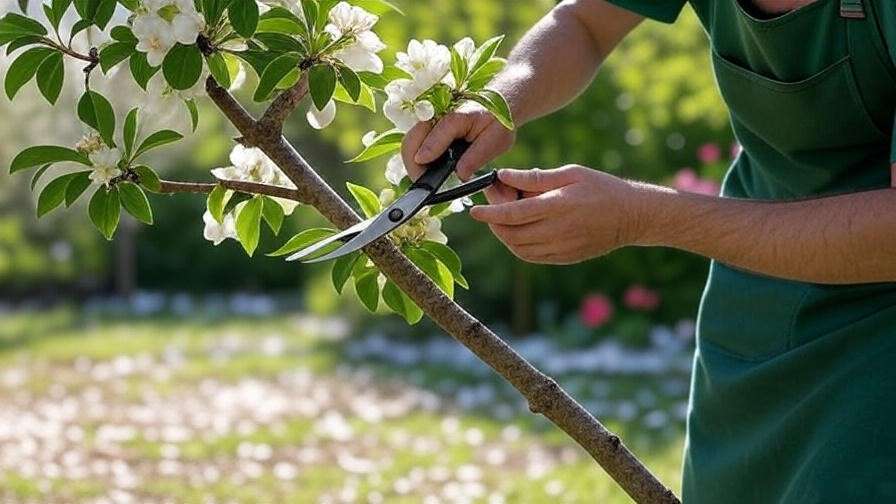
Pest and Disease Management
Common pests like aphids, scale, or spider mites can affect white flowering trees, while diseases such as powdery mildew or root rot may occur in poor conditions.
- Prevention: Maintain good air circulation through proper pruning and avoid overhead watering.
- Organic Solutions: Use neem oil or insecticidal soap for pests. For fungal issues like powdery mildew, apply a baking soda solution or sulfur-based fungicide.
- Monitoring: Regularly inspect leaves and branches for signs of trouble, especially during humid weather.
Example: Hawthorns are prone to aphids; early detection and treatment with insecticidal soap can prevent infestations. 🐞
Winter Protection
In colder climates, protect your white flowering trees from harsh winter conditions to ensure spring blooms.
- Mulching: Add an extra layer of mulch around the base to insulate roots.
- Wrapping: Use burlap to wrap young trees or those sensitive to frost, like star magnolias, to shield against wind and freezing temperatures.
- Anti-Desiccant Sprays: Apply to evergreens or semi-evergreens like magnolias to prevent winter burn.
Pro Tip: For dogwoods in zones 5-6, wrap trunks to prevent sunscald during fluctuating winter temperatures. ❄️
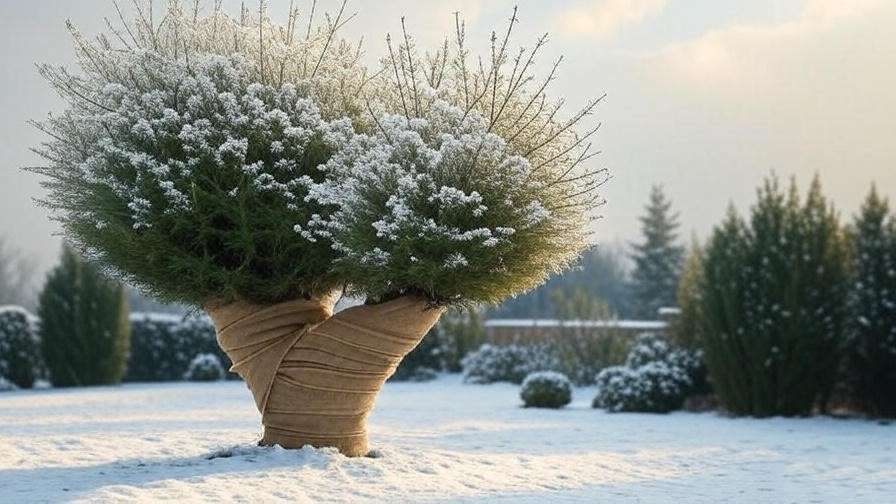
Landscaping Ideas with White Flowering Trees 🏡
White flowering trees are versatile additions to any landscape, offering endless possibilities for creating stunning garden designs.
Creating Focal Points
Use a white flowering tree as a centerpiece to draw the eye. A flowering dogwood or catalpa planted in the center of a lawn or garden bed creates a dramatic focal point. Pair with colorful perennials like lavender or black-eyed Susans for contrast, or surround with low-growing shrubs for a layered effect.
Example: A star magnolia near a garden bench invites visitors to pause and admire its delicate blooms. 🌸
Designing for Year-Round Interest
Combine white flowering trees with plants that offer seasonal variety. For instance, plant a serviceberry alongside evergreens for winter structure, or pair a crabapple with ornamental grasses for fall texture. Plan for overlapping bloom times to keep your garden vibrant from spring through fall.
Idea: A white redbud in spring, followed by crepe myrtle blooms in summer, ensures continuous color. 🍁
Small Space Solutions
For urban gardens or patios, choose dwarf varieties like star magnolias or Japanese snowbells. These compact trees fit perfectly in tight spaces or containers. When planting in pots, ensure proper drainage and use a high-quality potting mix.
Tip: Place a potted white redbud on a balcony for a pop of spring color without sacrificing space. 🌿
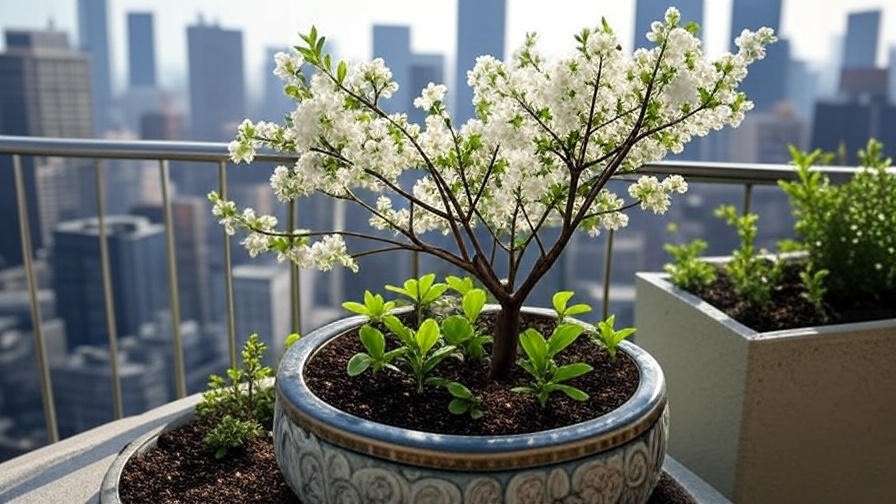
Common Mistakes to Avoid When Growing White Flowering Trees 🚫
To ensure your trees thrive, steer clear of these common pitfalls:
- Overwatering: Poor drainage can cause root rot, especially in dogwoods or magnolias. Ensure proper soil drainage and avoid soggy conditions.
- Incorrect Pruning: Pruning at the wrong time (e.g., late summer for dogwoods) can reduce blooms. Stick to late winter or early spring.
- Ignoring Soil Needs: Test soil pH before planting; catalpas prefer neutral soil, while magnolias thrive in acidic conditions.
- Planting in Unsuitable Locations: Avoid planting sun-loving crepe myrtles in heavy shade or shade-tolerant fringe trees in full sun.
Expert Insights: What Arborists Say About White Flowering Trees 🧑🔬
Certified arborist Dr. Jane Thompson, with over 20 years of experience, shares: “White flowering trees like dogwoods and magnolias are a gardener’s dream, combining beauty with ecological benefits. Consistent care—proper planting, watering, and pruning—ensures they thrive for decades.” Sustainable practices, such as using organic mulch and avoiding chemical overuse, align with modern eco-conscious gardening. Arborists also recommend regular soil testing to monitor nutrient levels, especially for nutrient-sensitive trees like serviceberries.
FAQs About White Flowering Trees ❓
What is the easiest white flowering tree to grow?
Serviceberries and Japanese snowbells are low-maintenance, adaptable to various soils, and require minimal pruning.
How long do white flowering trees bloom?
Most bloom for 2-4 weeks in spring or summer, depending on the species. Crepe myrtles may bloom longer in warm climates.
Can white flowering trees grow in shade?
Yes, dogwoods and magnolias tolerate partial shade, making them ideal for wooded or urban gardens.
Are white flowering trees good for pollinators?
Absolutely! They attract bees, butterflies, and birds, supporting local ecosystems.
How do I prevent pests on my white flowering trees?
Regular inspections, proper pruning, and organic treatments like neem oil keep pests at bay.
Conclusion: Create a Stunning Garden with White Flowering Trees 🌿
White flowering trees bring elegance, ecological benefits, and year-round interest to any garden. From the delicate blooms of star magnolias to the bold clusters of catalpas, these trees offer endless possibilities for creating a vibrant, inviting outdoor space. By choosing the right tree for your climate and following our expert care tips, you can enjoy stunning blooms for years to come. Ready to transform your garden? Pick your favorite white flowering tree from our list and start planting today! Share your thoughts or favorite trees in the comments, and explore more plant care tips on our website. 🌸

